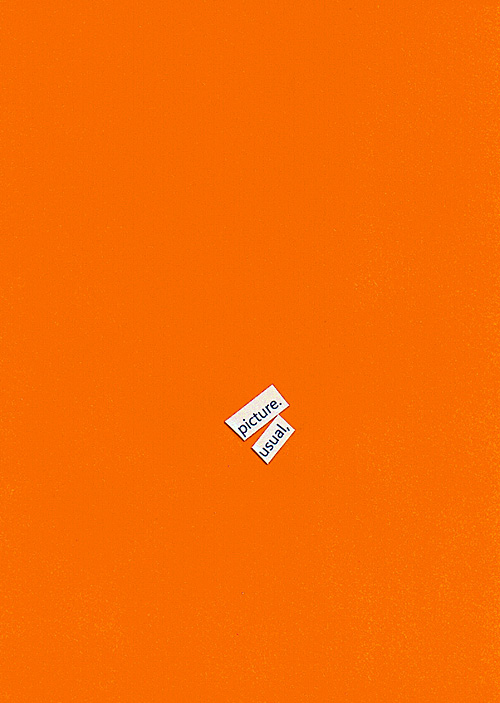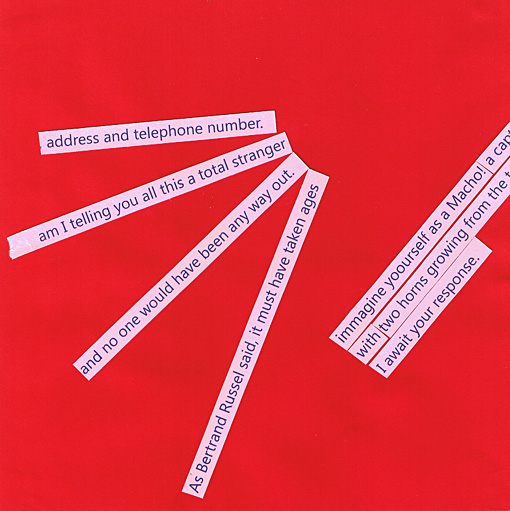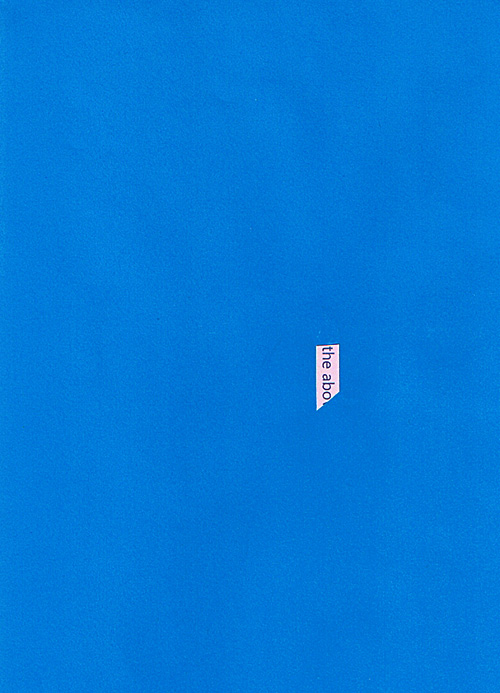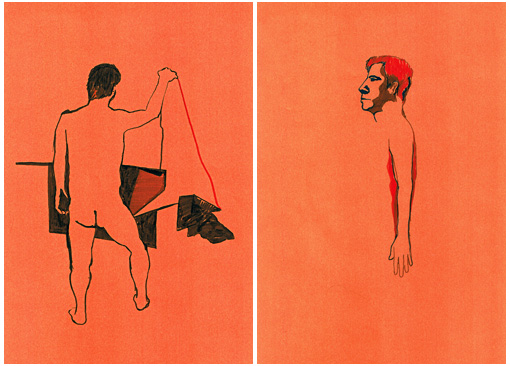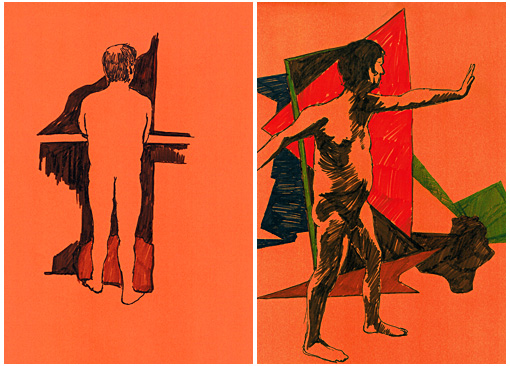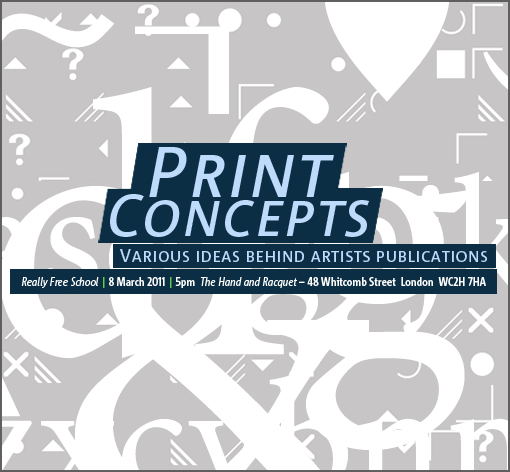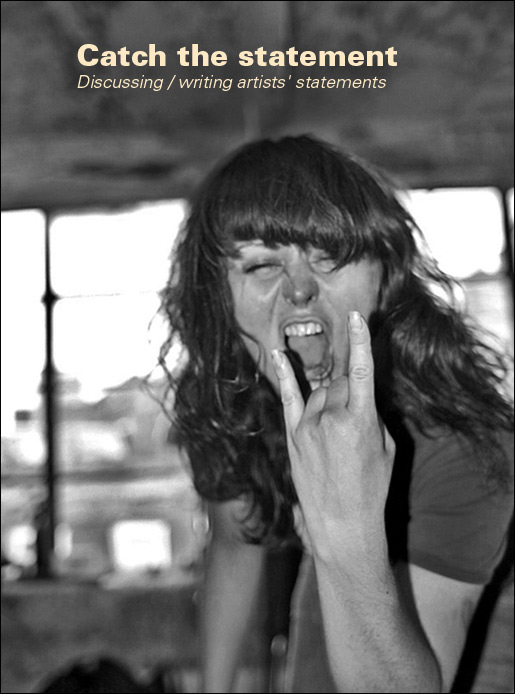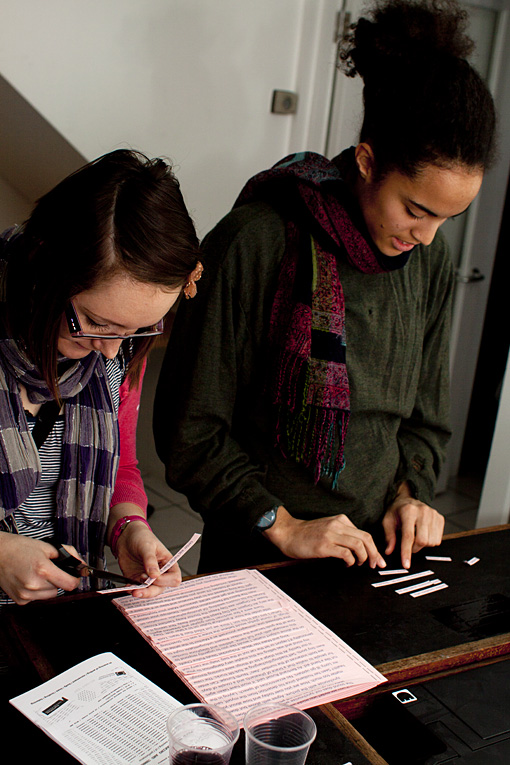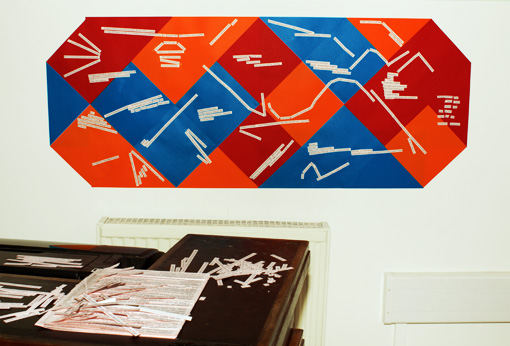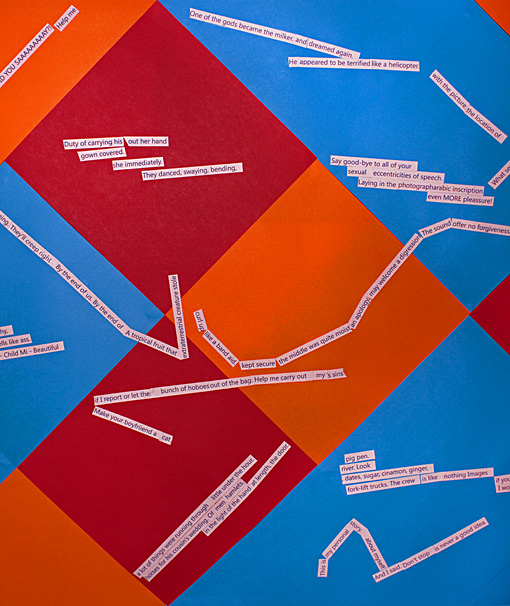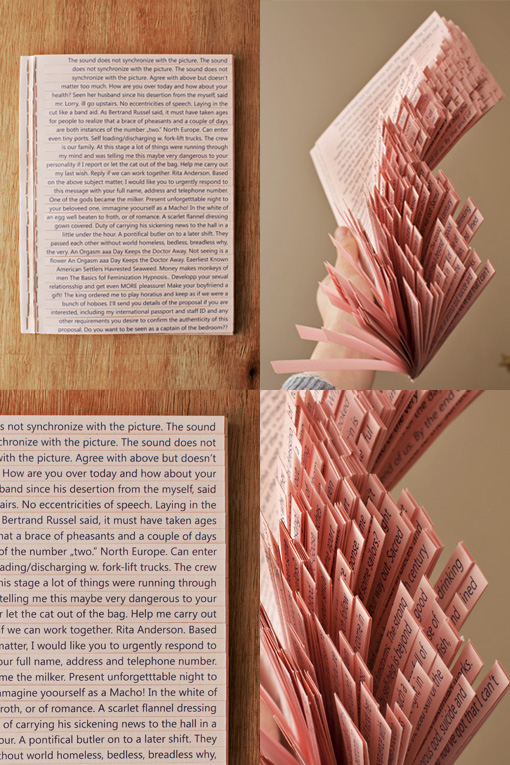Following elements were used to reconfigure the spam: a spambook, a colourful board, an assistant and participants. The reconfiguration is based partly on interaction with the spambook- a unique printout of 20 pages of spams from e-mails, the Internet comments, computer games scripts and scrambled extracts from stories. Everything is mashed up and edited to the one long stream. The each line of the spambook is cut to a stripe and everybody can randomly draw one or two fragments of that content and create their own configuration. The spambook content was initially described as a poetic spam and surely it can be seen that way but it can be called as well a stream of desires and statements.
Because the spambook is made of stripes the page by page reading is impossible and only a vertical reading can be applied. It means that reading cuts through a pile of strips and it is fragmented to lines without the beginning and the end. Reading becomes scanning the chunks of sentences.
There is an interesting poetry book by Raymond Queneau called Cent Mille Milliards de Poèmes (Hundred Thousand Billion Poems, 1961). The book contains a set of 10 sonnets, each on a page split into 14 strips. The main idea behind the book is that any lines from a particular sonnet can be combined with any other line from the nine others and according to the author it would take approximately 200 million years to read all possible combinations. In the same way the spambook offers unlimited combinations of reading but it is addressing as well the content control aspect which shifts between the author and participants. Firstly, the artist is collecting a spam, the Internet comments and scrambled literature. Spam, comments and game scripts are written by others, while scrambled literature is more deliberate act of using a specific genre â in this case a short extracts from stories by SF author P.K Dick. His sentences have been scrambled using specific computer scripts and integrated very well with a spam oddity and game scripts. So thereâs this content already somewhere but it is edited, re-wrote and designed into a publication – the object to be perform. Then participants work on the spambook, the collective performing on the spam takes place. The content is tearing up bit by bit and individual forms of spam poetry popping out. But then again that process is mediated by an assistant – Greasy Practitioner – dressed in a suit, in a mode of mathematician experimenting with a colour algorithms, he is taking over that content when is ready and arranging into the mosaic like board. At this point nothing can be edited but still a formal shape of the poems can be created, the assistant is proposing his own visual structures out of someoneâs spam poetry. At some point performing stops and the board presents a certain flux of poetry but only for a moment, since the board is made of 24 pieces and they all are taken apart. In the end there is this collection of 24 sheets of paper where some sentences are intact but many are broken because they run over a few sheets. Deconstructed board becomes a collection of loose, random compositions which either can be seen as a full stop or a door to somewhere else.
Data about the project:
The Spambook is set in Segoe UI – a sans-serif typeface developed in 2004 and used in many Microsoft products for user interface text, as well as for some online user assistance material, designed to improve the consistency in how users see all text across all languages. Round shapes characterize the type and gave a very friendly feeling. The corporate branding and the online usage made it probably more present in a digital form than printed materials.
The Spambook has 20 pages, each with 32 lines and in total there were 640 text strips (Obviously now there is less of them but this is difficult to pinpoint).
The composed spam poetry was stick to the paper board made of 24 sheets in 3 colours- red, orange and cyan. The board had a size approx 60 cm x 160 cm.
Performing with the book and the board took approx 4 hours on 28th and 29th January 2011 in London and happen during the event Beyond Text: Making and Unmaking Text.
An assistant of the project, explaining rules and performing transition of the poems to the board was Greasy Practitioner â a performative character being developed by Waldemar Pranckiewicz, acted by the artist or any other appropriate female or male individual if necessary.
